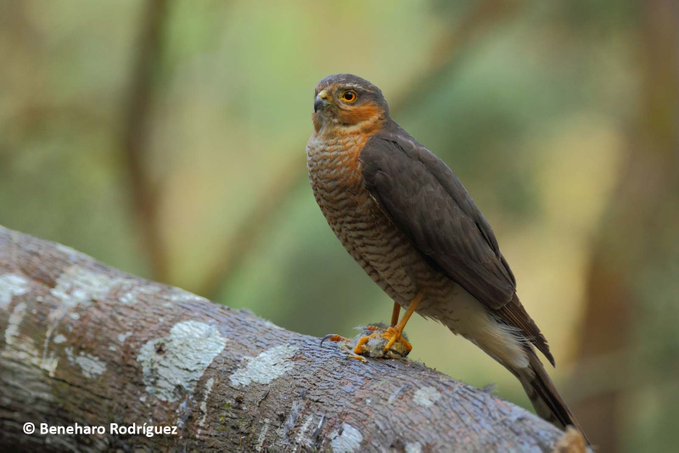The Doñana Biological Station has explored the suitability of exotic tree plantations as breeding habitat for an island endemic raptor, the Macaronesian sparrowhawk (Accipiter nisus granti). Forest?dwelling raptors living on islands are more vulnerable than continental relatives due to their particular life history traits and habitat degradation. The Canary Islands' forests have suffered severe transformations because of intense human exploitation since its colonization by the Europeans. In recent decades, forest managers have initiated actions to restore the original ecosystems. Consequently, gathering knowledge on the relationships between habitat and reproduction output of forest species is essential to develop long?term conservation actions.
Researchers monitored territories distributed in three main forest types, two native (laurel forest and Canarian pinewood) and one composed of exotic trees. They assessed breeding density, characterized nesting habitat at macro?, micro?habitat and nest tree levels, and estimated breeding parameters in the three forests. Then, they evaluated habitat selection and its potential relationship with breeding parameters, as well as nest structure survival in native versus exotic tree species.
Density was higher in exotic forests and habitat features differed among forests at three spatial scales. Sparrowhawks used areas with high cover of exotic trees, with high trees, far away from human settlements and at low altitudes. All models testing for differences in breeding success and productivity among the forest types were not significant, but the percentage of successful pairs was slightly higher in exotic tree plantations than in native forests. Nest structures located in exotic trees showed a higher annual survival than those placed in native trees.
In conclusion, the results indicate that exotic plantations are a secure nesting habitat and therefore forestry practices, including those aiming to eradicate exotic trees, must be carefully planned to avoid nest destruction or disturbance in occupied forest patches.
Reference
Beneharo Rodríguez, Airam Rodríguez , Juan Antonio Lorenzo, Juan Manuel Martínez. Exotic tree plantations as alternative breeding habitat for an endemic avian predator. Journal of Avian Biology. https://doi.org/10.1111/jav.02527
https://doi.org/10.1111/jav.02527

 Las altas temperaturas están provocando que las lagunas y las marismas de Doñana pierdan agua rápidamente
Las altas temperaturas están provocando que las lagunas y las marismas de Doñana pierdan agua rápidamente




